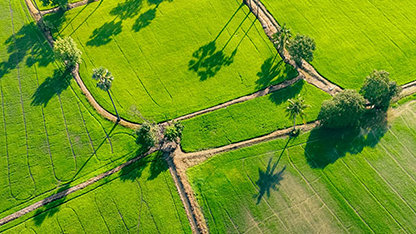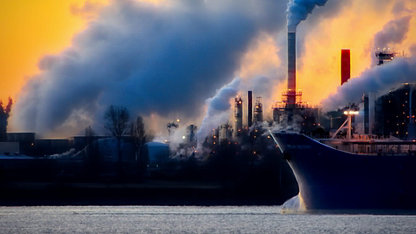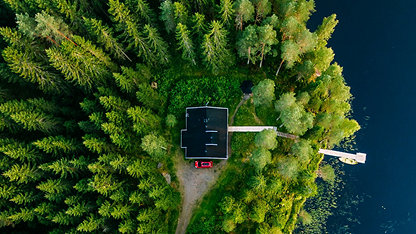Whether we should return swathes of Britain’s countryside to its natural state – rewilding – is a question that has been dividing rural communities. We sought views from both sides of the fence.
A smart opportunity
by Rob Yorke FRICS: rural chartered surveyor and independent commentator based in Abergavenny.
Approached smartly, rewilding can provide an array of opportunities.
If we can avoid some of the more loaded meanings attached to the word “rewilding”, there’s a huge number of smarter land management options to explore. In 2010, the government’s Making Space for Nature report spawned a multitude of landscape ambitions for the countryside – these were based on joining up habitats to create environmental gains for wildlife and water catchments, and to also benefit humans.
Land managers in England have been working together on “farmer clusters”, letting nature take its course in areas such as unworkable field corners to encourage more wildlife. In Wales, gamekeepers and farmers are working with conservationists to bring back pine martens, while up in Scotland, river managers are learning to live with beavers, and sporting estates are open to more wooded areas in traditionally managed “treeless” deer forests.
In uncertain and volatile times, land managers need tools to manage, husband, and utilise land by sometimes letting go of old ideas to forge new ones. It’s time to bypass people who use rewilding as a weapon against existing land uses, humour those who literally cry wolf over the reintroduction of species, and tame a collective need to robustly overturn every tightly prescriptive conservation plan.
Rural surveyors should be at the forefront of a nature-based economy, disrupting our own ways of thinking to help deliver real public benefits and profitable outcomes.
There's value to nature
by Dr Mark Everard: associate professor of ecosystem services at the University of the West of England.
Our understanding of rewilding needs to be enhanced for it to truly flourish.
What’s meant by rewilding depends on who you speak to: for some, it’s about returning to pre-human conditions, but for me it’s about taking an ecosystem-based approach to what we do.
With rewilding, the focus is on allowing nature to function properly, which can bring with it a multitude of environmental, economic and public benefits. The purest take on rewilding is bringing back bears, beavers and wolves – keystone species that help define entire ecosystems – and, in some landscapes, that works.
In Devon, for example, studies show that reintroducing beavers has massively improved water quality, water storage, and biodiversity. But what works in one place doesn’t necessarily work in another. In the uplands, we have traditionally given farmers subsidies to grow crops that don’t want to grow there and, in the process, we’ve neglected the fact that uplands are primary water capture areas.
Letting nature function properly in these areas – so that it enhances storage and water quality – has real economic value, as well as public benefit.
For rewilding to work properly, though, it requires farmer education as well as a change in cultural expectations. We need to be sophisticated in looking at net outcomes and public benefits over private goals to ensure that we drive real change.
Species under threat
10% of British wildlife species face extinction, including otters, red squirrels and hedgehogs.



What is the point of rewilding?
by John Fyall: Scottish chairman at the National Sheep Association.
Rewilding would waste valuable space, and put species and land we love at risk.
The theory of rewilding is an entirely different question to how sensible it is in practice. To start with, no one really knows what a wild upland really looks like, so it’s whatever advocates of rewilding want it to be. In Scotland, there’s evidence that cattle have been on some of our islands for 5,000 years, and today our forests are the largest they’ve been in recorded history. So the question has to be: what is rewilding for, and to what state are we seeking to return?
The rewilding debate also neglects the role that upland farming plays both in terms of managing the landscape – sheep and cattle help with drainage as they break up the soil – and supporting communities. Some of the best conservation work goes on when you have indigenous communities looking after the landscape.
If we’re talking about creating landscapes that people want to enjoy, then rewilding isn’t the answer either. Land left to go wild will return to bracken and thick scrub, something that won’t appeal to visitors, and could lead to a greater risk of fire in increasingly hot, dry summers. The rare species and landscape of the uplands exist because of the way the land is managed. Rewilding this land puts the things that people enjoy about Scotland at risk.
New forms of income
by Ross Murray FRICS: chairman of rural asset management at Knight Frank.
There’s no reason why rewilding and farming can’t coexist in harmony.
From a land manager’s perspective, there is a variety of interpretations about what rewilding could mean for our uplands. It can mean land abandonment, which I have seen a lot of in Wales – where tens of thousands of acres are being rewilded with bracken and scrub by default or neglect, thanks to almost insurmountable statutory limitations on landowners.
A second form is limited intervention, usually through control of stock, but also through planting or removal of trees. Many land managers already understand and practise that, and would perhaps be willing to make changes on a larger scale if they received the appropriate education, support, and cooperation of neighbours.
Then there’s more active management, involving fencing off stock, water retention, reintroducing species and planting trees.
However, there is a cost that needs to be considered. For rewilding to work, it will be necessary to educate, incentivise, and change hearts and minds.
Many farmers and land managers will be attracted to elements of rewilding that could lead to new forms of income – particularly around natural capital and tourism. What is polarising, however, is the “all or nothing” debate. The British landscape has, at least in living memory, been founded on some sort of human intervention.
- This article originally appeared in the January 2019 edition of Modus, titled A Walk on the Wild Side.
Read RICS’ recent paper on the Value of Natural Capital: the Need for Chartered Surveyors

















